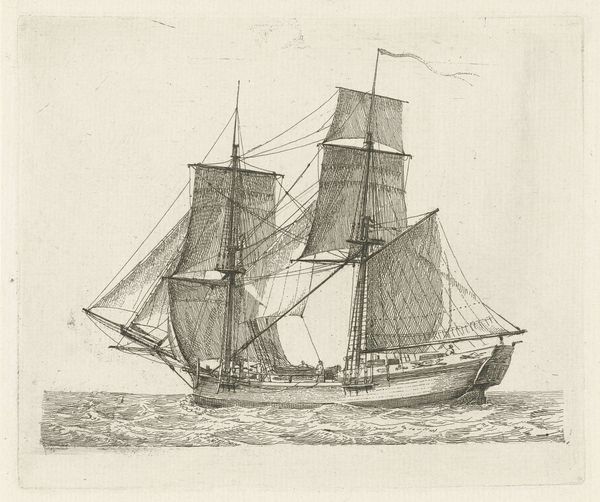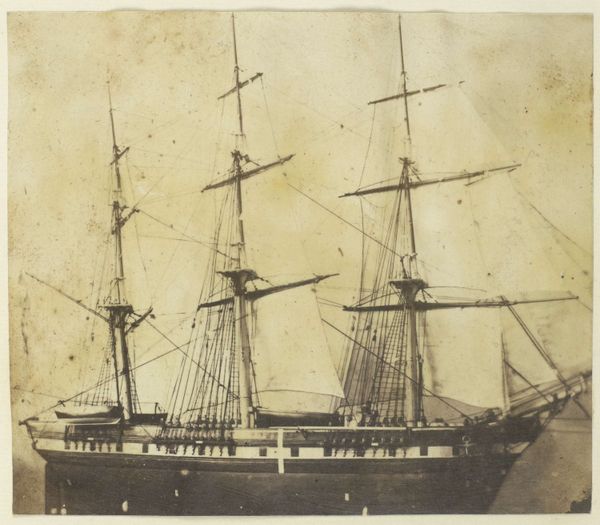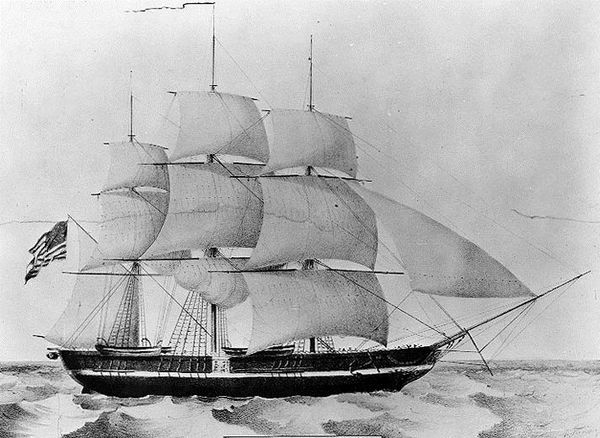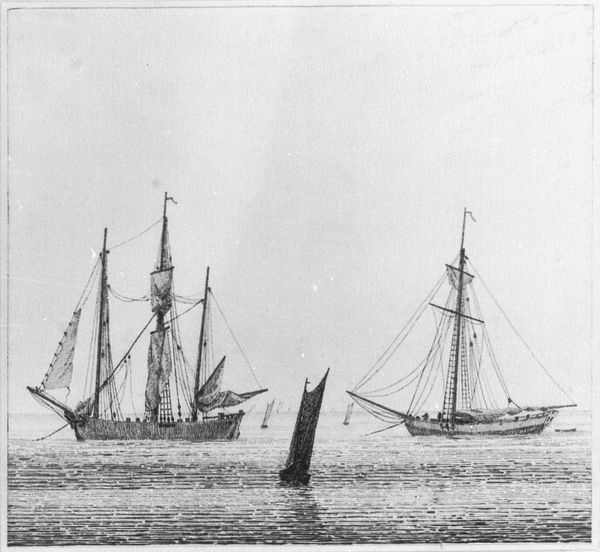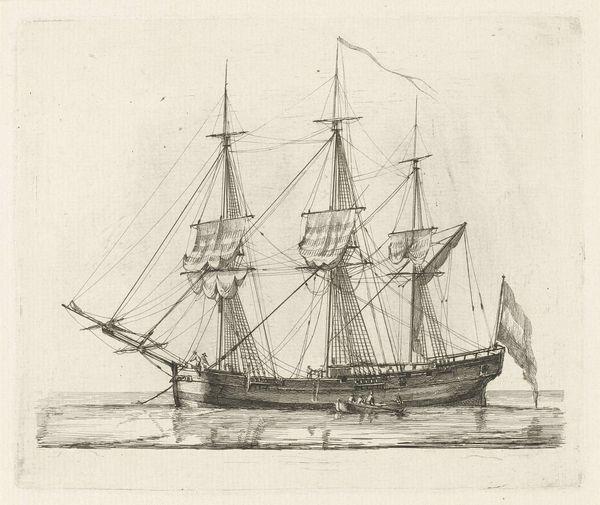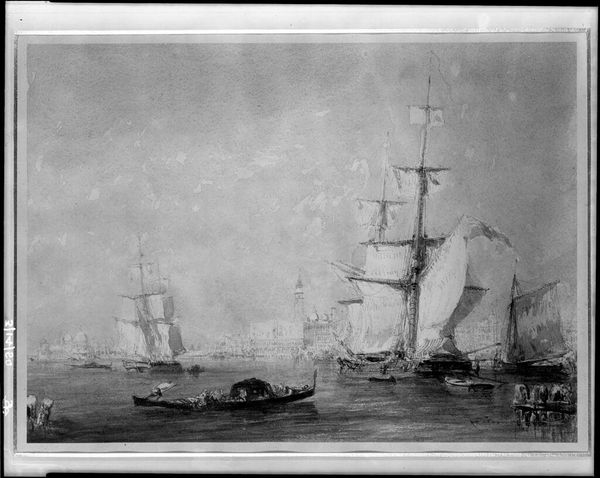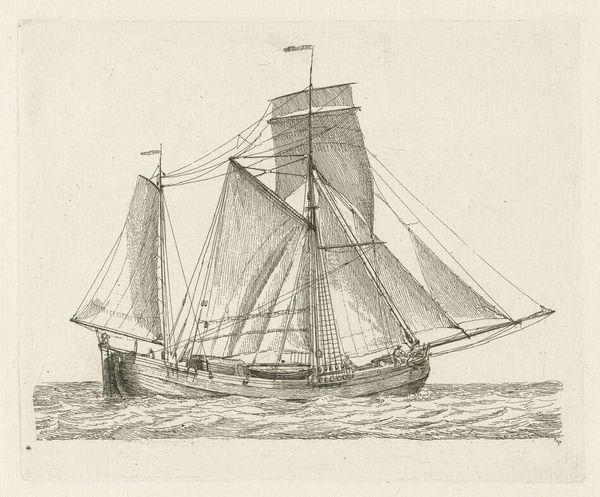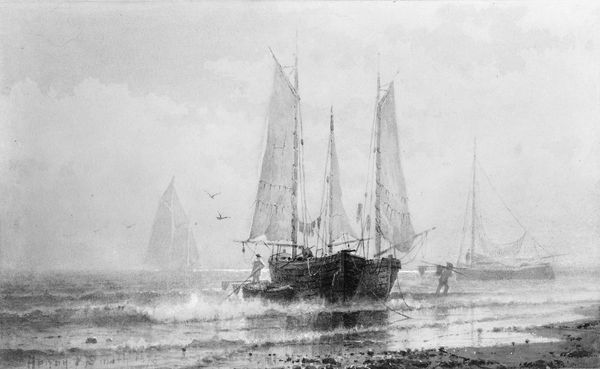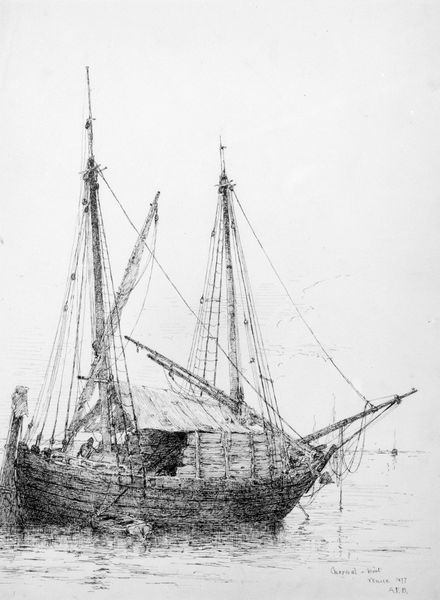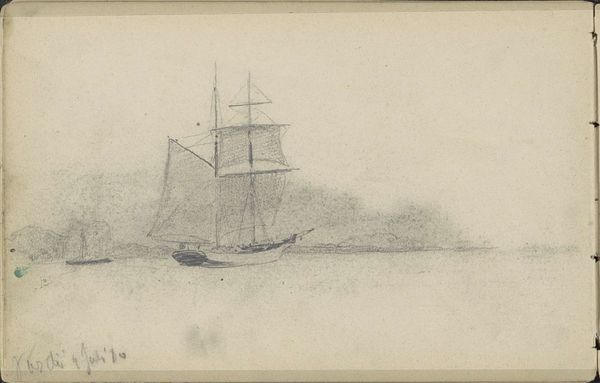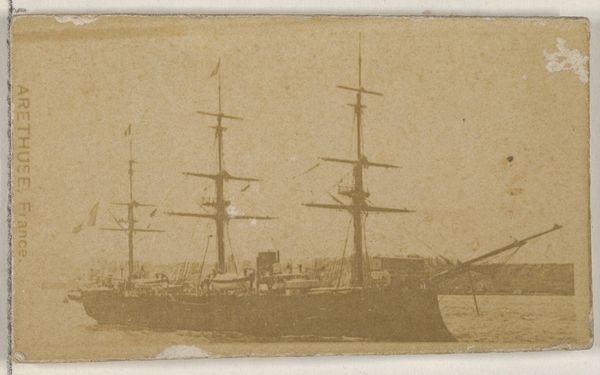
drawing, print, pencil
#
drawing
#
amateur sketch
#
thin stroke sketch
#
ship
# print
#
pencil sketch
#
incomplete sketchy
#
landscape
#
study drawing
#
charcoal drawing
#
detailed observational sketch
#
romanticism
#
pencil
#
rough sketch
#
quick sketch
#
initial sketch
Dimensions: 6 9/16 x 6 13/16 in. (16.7 x 17.3 cm)
Copyright: Public Domain
Curator: Here we have "Ship (from McGuire Scrapbook)," a pencil drawing from 1839, currently residing at the Metropolitan Museum of Art. Editor: It's incredibly ethereal. The soft pencil strokes give the ship this ghostly, almost dreamlike quality. It feels incomplete, like a memory fading at the edges. Curator: That incomplete quality is really interesting considering its context. Drawings like these, often tucked away in scrapbooks, give us insight into the social life of art at the time. Who made it and for what purpose? It's labeled as an amateur sketch. It wasn’t about grand commissions, but the accessibility of drawing to broader public spheres. Editor: Exactly. Looking at the materiality – pencil on paper – you think about availability. This wasn't about the expensive pigments of high art. Pencils democratized image making. Who could get hold of pencils, paper? This quick and efficient medium also invites us to consider labor differently. Less training perhaps, immediate portability. Curator: That connects with the subject matter too. Ships weren’t just vessels, they represented networks, trade, migration, colonial reach. They embodied so many societal values. How does an amateur capture that through line? Editor: The very roughness speaks volumes. There is no hiding of labor, here, because you know that an artist's or artizan's hand has been working the material: the tool, the surface, their subject.. It shows the human element in an era defined by expansion and nascent technologies of scale. A simple act of human recording within these new emerging dynamics of global exchange. Curator: I think it’s significant how the Romanticism movement embraced this emotional expression of the sea through quick sketches. It also opens a space to critique these social undercurrents, since ship and landscape paintings carried heavy historical loads concerning colonialism. It becomes this visual shorthand. Editor: Well, and think about who might be creating the artwork. This very rapid materiality allows access points for varied classes. What type of education might have shaped the understanding and execution of it, and of whom were they circulating it amongst? Curator: A snapshot of its time captured so simply and beautifully. Editor: A wonderful exercise of how to consider materiality, circulation, and access through what looks at first like a simple rendering.
Comments
No comments
Be the first to comment and join the conversation on the ultimate creative platform.
